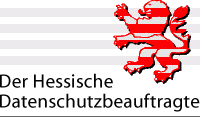Using Brain Science to Drive Consumer Action

Earlier in the week, I started a decision-science series that I’ll carry through the entire year. I’m really excited to spend some time on this emerging topic that has already proven to be a game changer in the digital-marketing industry. Brain science and its offshoot, neuromarketing, have quickly become such powerful concepts that many organizations are integrating these principles into their day-to-days; some have even gone so far as to bring neurologists and cognitive scientists on staff to inform and infuse overarching marketing initiatives. To speak of their experiences, Dr. Carmen Simon of Rexi Media; Jennifer Towns, AOL’s VP of Marketing; and Merkle Principal Consultant, Leah van Zelm presented a riveting session, “Bringing neuroscience to the world of data-driven marketing (link is external),” earlier this month and weighed in on their companies’ respective efforts. Audiences remember 10 percent of what we present, and according to Dr. Simon, marketers can tap into brain science to best craft both that 10 percent and the experiences that push consumers toward that critical information.
Every company that’s integrating these best practices has different motivators, processes, and end goals. At AOL, Jennifer explained, they recognize that the 10 percent isn’t the same for everyone, and they strive to connect the right message to the right person at the right time, drawing on that user’s own personal experiences. Because different things happen to us daily—and have happened to us in our lives—words, experiences, stimuli, and other external factors automatically have unique meanings to individuals. What I perceive one way may be perceived completely differently by another person. And for AOL, that could mean 1,000 different 10-percent messages that, through lookalike modeling and other predictive elements, can be utilized across their entire customer base.
Going in, AOL always knows what actions they want consumers to take, stemming from the 10 percent they want them to take away. For Merkle, it’s similar and starts with that same notion of gaining messaging clarity. Leah’s team is always spot on in terms of what they want to say, how they want to deliver the message, and the context by which it should be surrounded. When she looks at decisioning, it’s about appealing to unique consumer motivations in relevant, experience-driven ways. For them, it’s the “single selfish benefit” of it all. How can that single selfish benefit become the 10 percent? And how can they determine what my single selfish benefit is or yours, your spouse’s, your colleague’s, and your neighbor’s? Simply speaking, it’s about diving into the context of the engagement—what consumers are searching, what they’re saying, and how they came to the platform, for example—to craft more relevant experiences and messaging with the 10 percent always front and center.
Once the 10 percent has been determined, it’s essential to go back to the core principles of brain science to then drive action. Dr. Simon’s equation for inspiring action is simple:
Attention + Memory + Decision = Action
Full article available at http://adobe.ly/1MTR2P5 (link is external)


